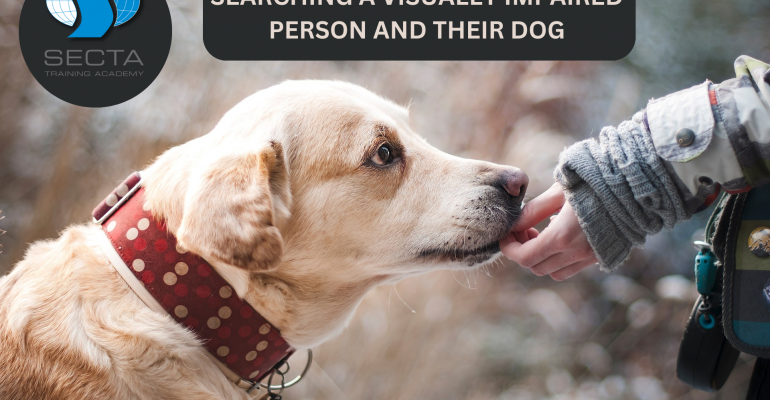SEARCHING A VISUALLY IMPAIRED PERSON AND THEIR DOG.
24 August 2023 2023-08-24 8:29SEARCHING A VISUALLY IMPAIRED PERSON AND THEIR DOG.
When conducting a search on a visually impaired person and their assistance dog as a NSW security officer, it’s crucial to handle the situation with sensitivity, respect, and an understanding of the unique circumstances. Here’s a comprehensive guideline on how to approach this scenario:
Approach with Respect:
Approach the visually impaired person calmly and respectfully. Introduce yourself and explain the reason for the search.
Acknowledge the Dog:
Greet both the person and their assistance dog, acknowledging the importance of the dog’s role. It’s essential to recognize that assistance dogs are working animals and play a vital role in their owner’s daily life.
Communication and Consent:
Clearly explain the search process to the individual and ask for their consent to proceed with the search.
Understand the Dog’s Role:
Ask if the assistance dog is trained for specific tasks, such as guiding, alerting to hazards, or retrieving items. This will help you understand the dog’s behavior during the search.
Accommodation for the Dog:
Ask if the person would like assistance with holding the dog’s leash or any other accommodations that may be necessary during the search.
Sensitive Techniques:
Use gentle and non-invasive search techniques, such as a pat-down, ensuring that the assistance dog remains comfortable and undisturbed.
Limit Touching of the Dog:
When searching the individual, avoid touching the assistance dog without explicit permission. The dog may be trained to react to certain touch cues.
Respect Personal Space:
Maintain the individual’s privacy and personal space during the search. Avoid making any remarks that could be embarrassing or disrespectful.
Communicate Clearly:
Throughout the search, communicate with the individual about your actions. Let them know where you are and what you are doing to avoid causing confusion.
Listen and Respond:
Be attentive to any concerns or requests the individual may have during the search. Adapt your approach based on their feedback.
Feedback and Aftercare:
After the search, ask if they have any feedback or concerns about the process. Provide assistance if needed to ensure they and their assistance dog feel comfortable and safe after the search.
Be Patient:
Recognize that assistance dogs are trained to remain calm and focused, even in busy or unfamiliar environments. Be patient if the dog needs a moment to adjust.
Training and Education:
Security officers should receive training on interacting with visually impaired individuals and their assistance dogs to ensure proper procedures and respect.
Remember that every situation is unique, and it’s important to prioritize the comfort, dignity, and safety of both the visually impaired person and their assistance dog. Approach the situation with empathy and understanding, and always follow security protocols while accommodating the needs of the individual and their dog.



